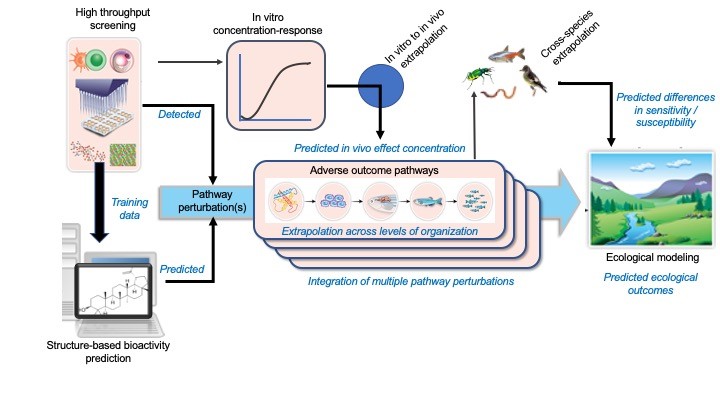Mechanistic understanding of the underlying principles governing the adverse effect of chemicals on humans, wildlife and ecosystems

The adverse outcome pathway (AOP) links the cellular toxicity pathway with the organ level response, followed by the organism level response and ultimately the population level response. AOPs provide a unifying concept linking ecotoxicology and human toxicology.
We do research on understanding toxicokinetic and toxicodynamic processes. Toxicokinetics describe all processes that link external exposure (e.g., via drinking water or food) to the biologically effective dose in the cell). These processes comprise the absorption, excretion, internal distribution and metabolism of a chemical within the body and cells. Our work is focused on toxicokinetic modelling and assessment of internal concentrations. This includes partitioning and kinetic studies.
The toxicodynamics describe the toxicity pathways that take place within the cell, starting with the initial molecular interaction(s) of the chemical and its biological target through cellular defence mechanisms and other cell responses to observable toxic effect(s) or disease. As cellular responses often occur via multiple steps, many overlaps and links exist between the many different toxicity pathways. Nevertheless, the large number of molecular responses can be integrated into a finite number of environmental and health-relevant pathways that are relevant for risk assessment. Within a given toxicity pathway, chemicals and stressors typically act together in an additive manner, which paves the way for a systematic evaluation of mixtures. We investigate selected toxicity pathways of environmental chemicals with a focus on adaptive stress responses and use high-throughput screening assays.
